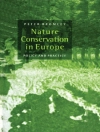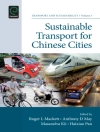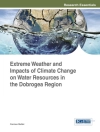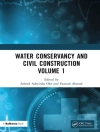This volume offers an up-to-date and broad perspective of the archaeology of human-animal interactions through time in the Neotropical Biogeographic Region, ranging from southern North America to southern South America. The region has a rich and singular biotic history. The collection of works included in the volume –originally presented at the Second Academic Meeting of the NZWG-ICAZ – describes some of the instances of the diverse interactions of human and faunal populations in such a setting and the particular properties characterizing the derived archaeofaunal record. Understanding the zooarchaeological imprint of human insertion and evolution in this context represents an opportunity for improving our knowledge on the many ways modern humans have dealt with the colonization of the whole globe, and on the varied forms of organization they assumed within such diverse environments. The topics covered in this volume shed light on different and complementary aspects of the state ofthe art in zooarchaeological research in the Neotropics, and reveal how much Neotropical zooarchaeology has been growing in the past few decades. Several chapters focus on marine resources, covering a broad range of the diversity found in the Neotropical coastal environments. Another set of chapters deals primarily with inland Neotropical animals –including terrestrial, riverine/estuarine and avian faunas– and also with varying societal organizations. Natural formation processes in Neotropical environments are also dealt with in this collection of works. Finally, Neotropical faunas also entail unique methodological challenges, and some chapters provide new information from this perspective. Altogether, these contributions help grasp how unique human-animal interactions have been in the Neotropics, and yet how much can be learnt from them even for other settings and other times.
Table des matières
Zooarchaeology in the Neotropics: an Introduction.- Pinniped Capture and Processing: a Comparative Analysis from Beagle Channel (Tierra del Fuego, Argentina).- Use of Marine Fauna and Tool Stones in the South of Buenos Aires Province (Argentina) during the Middle and Late Holocene.- Shell Mounds of the Southeast Coast of Brazil: Recovering Information on Past Malacological Biodiversity.- Faunal Subsistence Resources in the Cañada Honda Locality (Northeastern Buenos Aires province, Argentina).- Space Use Patterns and Resource Exploitation of Shell Middens from the Río de La Plata Coast (Ca. 6, 000 to 2, 000 years BP), Uruguay.- Use of Animals during the Mid-Archaic and the Initial Period in Pernil Alto: A site in the Palpa Valleys, Southern Coast of Peru.- Taphonomy of Surface Archaeological Bone Assemblages In Coastal Patagonia: A Case Study.- The Fossorial Faunal Record at the Beltrán Onofre Banegas-Lami Hernandez Archaeological Site (Santiago del Estero province, Argentina): A Taphonomic Approach.- Archaeological Collagen Fingerprinting in the Neotropics; Protein Survival in 6000 Year Old Dwarf Deer Remains From Pedro González Island, Pearl Islands, Panama.- Osteometrics of South-Central Andean Wild Camelids: New Standards.
A propos de l’auteur
Mariana Mondini is a Researcher of the Consejo Nacional de Investigaciones Científicas y Técnicas (CONICET, Argentina) at the Laboratorio de Zooarqueología y Tafonomía de Zonas Áridas (La ZTA, IDACOR), and teaches in the Department of Anthropology of the Universidad de Buenos Aires. She holds a Ph D in Archaeology by the Universidad de Buenos Aires, and a Diploma de Estudios Avanzados in Palaeontology by the Universidad Autónoma de Madrid. She is part of the Executive and International Committees of the International Council for Archaeozoology (ICAZ), and also a Coordinator of the Neotropical Zooarchaeology Working Group (NZWG-ICAZ). Her research focuses on long-term human-animal interactions and vertebrate taphonomy in the Andean region and in the arid lands of Southern South America generally. She has edited some volumes and has published several book chapters and a number of articles on these and related issues.
A. Sebastián Muñoz, Ph D by the Universidad de Buenos Aires, is a Researcher at the National Research Council of Argentina (CONICET, Argentina) where he investigates hunter-gatherer zooarchaeology and taphonomy in coastal Patagonia. As a Professor of the Universidad Nacional de Córdoba, he teaches Human Evolution and Osteoarchaeology at the Department of Anthropology. He is part of the International Council for Archaeozoology (ICAZ) since 2002, and an elected member of the International Committee of this organization since 2010, and is a Coordinator of the Neotropical Zooarchaeology Working Group (NZWG-ICAZ). He has co-organized and published three symposiums on zooarchaeology and marginal areas and zooarchaeology and taphonomy at a Neotropical scale. His research on human-animal interactions in Southern Patagonia and Tierra del Fuego island has produced several book chapters and articles dealing with marine and terrestrial mammal exploitation by past Patagonian human populations, as well as actualistic studies on natural bone accumulations.
Pablo Marcelo Fernández is a Researcher of the Consejo Nacional de Investigaciones Científicas y Técnicas (CONICET, Argentina), working at the Instituto Nacional de Antropología y Pensamiento Latinoamericano (INAPL, Ministerio de Cultura, Buenos Aires, Argentina). He is a Ph D by the Universidad de Buenos Aires, and teaches in the Anthropology area (Ciclo Básico Común) and the Archaeology area (Facultad de Filosofía y Letras) at this University. He is a Coordinator of the Neotropical Zooarchaeology Working Group (NZWG) of the International Council for Archaeozoology (ICAZ). His research focuses on hunter-gatherer/prey interactions in Northern Patagonia, vertebrate taphonomy in arid and forest environments, and heritage, centred in the management of rock art archaeological sites. He has published a book, several book chapters and numerous articles on these topics.












